★★½
“Dogged by issues, I’d say.”
 You could call this a foul-mouthed, borderline misogynist, zero budget piece of trash, with no coherent plot, where it seems every other word is a F-bomb or C-missile, and most of the lines are not so much spoken, as yelled. I wouldn’t argue with such an assessment, and understand perfectly why it is rated 1.4 on IMDb. And, yet… It has a relentless and manic energy which makes Crank look like a Merchant-Ivory costume drama. Put another way: unlike the overlong Rogue One, I did not fall asleep here, and it will likely stick in my mind longer than the three other, far more polished productions, which I watched the same day. Probably because, unlike this, they did not have a topless little person being tossed off a roof.
You could call this a foul-mouthed, borderline misogynist, zero budget piece of trash, with no coherent plot, where it seems every other word is a F-bomb or C-missile, and most of the lines are not so much spoken, as yelled. I wouldn’t argue with such an assessment, and understand perfectly why it is rated 1.4 on IMDb. And, yet… It has a relentless and manic energy which makes Crank look like a Merchant-Ivory costume drama. Put another way: unlike the overlong Rogue One, I did not fall asleep here, and it will likely stick in my mind longer than the three other, far more polished productions, which I watched the same day. Probably because, unlike this, they did not have a topless little person being tossed off a roof.
The tone is set early, in an opening scene which has British porn star Ben Dover having sex with an artificially-inflated woman, who then stabs him repeatedly. This may be some kind of tribute to Basic Instinct. Or maybe not. The actual plot involves Yvette (Rowland), owner of a model agency, who suddenly finds herself forced to take part in a bizarre game, where she has to kill five specified people. If she doesn’t, her workmates, friends and family will be murdered instead, something the tattooed, foul-mouthed thug (Marriner) working for those running the game, is more than happy to do. “Fortunately” for the film, Yvette’s model agency specializes in soft-porn, which leads to multiple scenes of photoshoots being interrupted by said thug, who kills the photographer, has sex with the model and then kills her. Subtle, it ain’t. Meanwhile, Yvette gets help from a couple of former game players (Reid and – no relation – Reid), on her journey transforming from a mouse into the title creature.
The cast are largely non-professionals, being a parade of C-list celebs, MMA fighters, former gangsters, football hooligans, glamour models etc. and the performances are about what you’d expect from that. On the plus side, almost everyone is playing little more than themselves – sometimes even explicitly themselves – so I guess can only be considered convincing enough in those roles. No-one is going to claim Rowland was overlooked for the Oscars, but she channels Eileen Daly effectively enough, and at least she stayed. In contrast, Reid #1 (Alex) walked off the film in mid-production, leading to his being replaced by Reid #2 (Robin); it probably says quite a lot about the slapdash way this is thrown together, that it doesn’t make much difference.
There is so much here that is quite clearly intended to shock and offend, but it’s an intent which robs the film of actual transgressive quality. That said, I must confess I did laugh on occasion, such as at the fight in the ice-cream van, and there were times when the relentlessly sweary dialogue took on an almost hypnotic quality, through repetition. Against this, it’s often painfully inept, with continuity gaffes so blatant even I noticed them, like the sex scene where Reid (I forget which one) has his trousers up or down, depending on the shot. But, dammit, it’s not a film I’m going to forget in a hurry, and even if that’s not necessarily a good thing here, it’s still preferable to something bland and rapidly lost in the mists of memory.
Dir: Liam Galvin
Star: Yvette Rowland, Jason Marriner, Alex Reid, Robin Reid





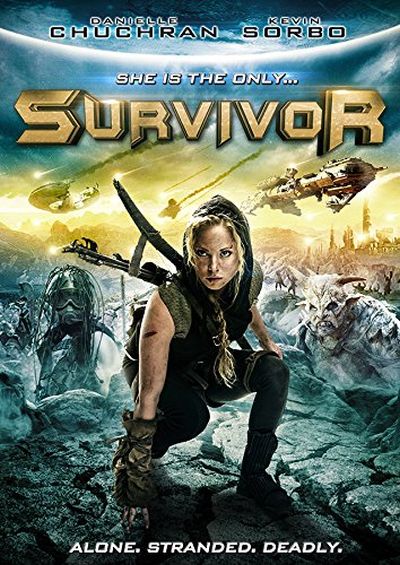 Arrowstorm Entertainment appear to have quietly become a minor creator of action heroine flicks. We’ve previously written about several entries in their
Arrowstorm Entertainment appear to have quietly become a minor creator of action heroine flicks. We’ve previously written about several entries in their  This sixth installment in Arruda’s outstanding series has much in common, in terms of style and other characteristics, with the preceding five. We pick up here in February 1921, and our setting is the familiar one of Nairobi and its environs; all or most of the supporting cast we’ve come to like are here, as well as Jade herself.
This sixth installment in Arruda’s outstanding series has much in common, in terms of style and other characteristics, with the preceding five. We pick up here in February 1921, and our setting is the familiar one of Nairobi and its environs; all or most of the supporting cast we’ve come to like are here, as well as Jade herself.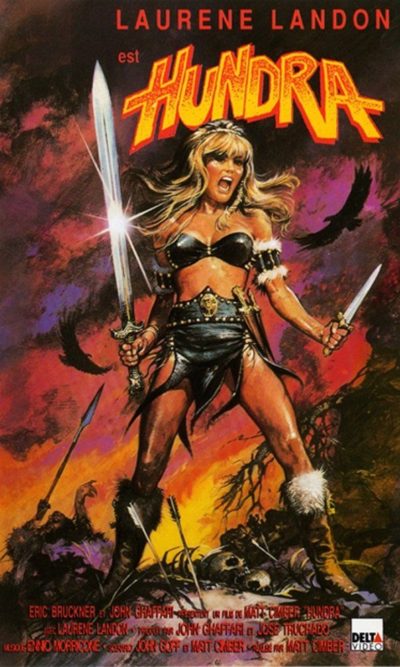 Director Cimber seems always to have had an interest in the action-heroine genre, having previously directed Lady Cocoa, he’d go on to do Yellow Hair and the Fortress of Gold , also starring Landon, and work on Gorgeous Ladies of Wrestling. But this was likely his best work, a rather inspired Conan knock-off, which both predates and is significantly better than Red Sonja.
Director Cimber seems always to have had an interest in the action-heroine genre, having previously directed Lady Cocoa, he’d go on to do Yellow Hair and the Fortress of Gold , also starring Landon, and work on Gorgeous Ladies of Wrestling. But this was likely his best work, a rather inspired Conan knock-off, which both predates and is significantly better than Red Sonja.





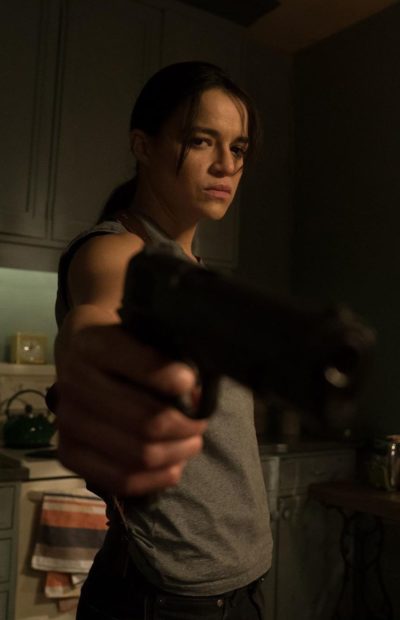 I’m a big fan of any film with an outrageous premise, and this one certainly delivers. Mob hitman Frank Kitchen (Rodriguez) carries out his latest job with no qualms, killing a debtor. What he doesn’t realize is, the victim’s sister is a talented but EXTREMELY twisted surgeon, Dr. Rachel Jane (Weaver). She vows to take revenge on Frank by removing what she feels matters most to him: his masculinity. Kitchen is knocked out, kidnapped, and wakes up in a seedy hotel room, to find herself in possession of a couple of things she didn’t have before, and missing something she used to have. But gender reassignment does not make the (wo)man, and an extremely pissed-off Frank vows revenge of her own, both on Jane and Honest John Hartunian (LaPaglia), the former employer who betrayed Kitchen.
I’m a big fan of any film with an outrageous premise, and this one certainly delivers. Mob hitman Frank Kitchen (Rodriguez) carries out his latest job with no qualms, killing a debtor. What he doesn’t realize is, the victim’s sister is a talented but EXTREMELY twisted surgeon, Dr. Rachel Jane (Weaver). She vows to take revenge on Frank by removing what she feels matters most to him: his masculinity. Kitchen is knocked out, kidnapped, and wakes up in a seedy hotel room, to find herself in possession of a couple of things she didn’t have before, and missing something she used to have. But gender reassignment does not make the (wo)man, and an extremely pissed-off Frank vows revenge of her own, both on Jane and Honest John Hartunian (LaPaglia), the former employer who betrayed Kitchen. Claire is the official “court assassin” to Mab, who is the Winter Faerie Queen. Her realm lies in a world parallel to ours, but separate from it, and inhabited by a slew of creatures we humans know only from myth, who can travel back and forth to the mortal world. Mab traffics in “Dream”, which is somewhere between a food, a drug and currency for her citizens, and the product of human emotions, particularly in group settings such as concerts or other shows. However, someone is muscling in on her turf, with the intent of controlling the Dream, and she unleashes Claire to track down the culprit, who turns out to be the ‘Pale Queen’ of the title.
Claire is the official “court assassin” to Mab, who is the Winter Faerie Queen. Her realm lies in a world parallel to ours, but separate from it, and inhabited by a slew of creatures we humans know only from myth, who can travel back and forth to the mortal world. Mab traffics in “Dream”, which is somewhere between a food, a drug and currency for her citizens, and the product of human emotions, particularly in group settings such as concerts or other shows. However, someone is muscling in on her turf, with the intent of controlling the Dream, and she unleashes Claire to track down the culprit, who turns out to be the ‘Pale Queen’ of the title.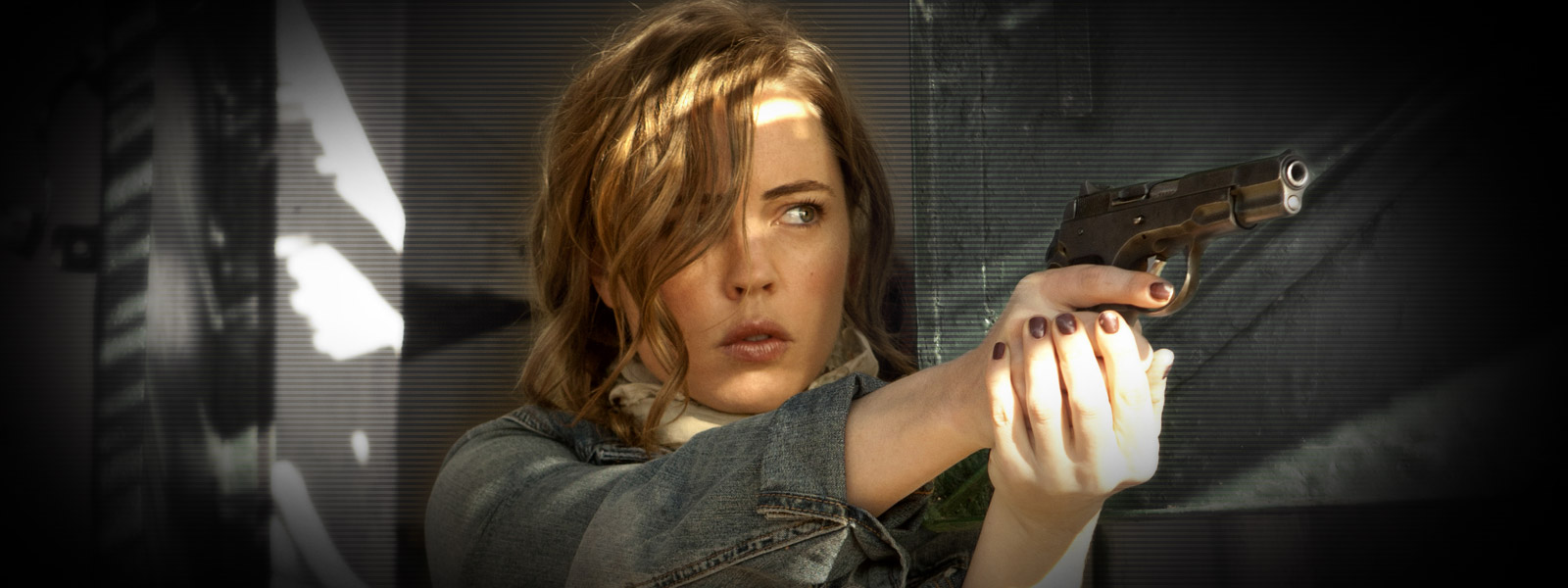 ★★★
★★★ Originally pitched as a vehicle for Gillian Anderson – creator Spotnitz was a head writer on The X-Files – the main problem here is likely a structure which demands a second season the show never received. This seems to have come as a surprise to the creators, since they had put together a writing team and planned out storylines. Then, the show was abruptly not renewed, in response to sagging British ratings (the series lost 30% of its viewers over the eight-week run). Even after the BBC pulled the plug, there were hopes Cinemax would continue the show, as it had sustained its audience much better in the US. Those failed to come to fruition either, and the story of Sam Hunter is left frustratingly incomplete.
Originally pitched as a vehicle for Gillian Anderson – creator Spotnitz was a head writer on The X-Files – the main problem here is likely a structure which demands a second season the show never received. This seems to have come as a surprise to the creators, since they had put together a writing team and planned out storylines. Then, the show was abruptly not renewed, in response to sagging British ratings (the series lost 30% of its viewers over the eight-week run). Even after the BBC pulled the plug, there were hopes Cinemax would continue the show, as it had sustained its audience much better in the US. Those failed to come to fruition either, and the story of Sam Hunter is left frustratingly incomplete.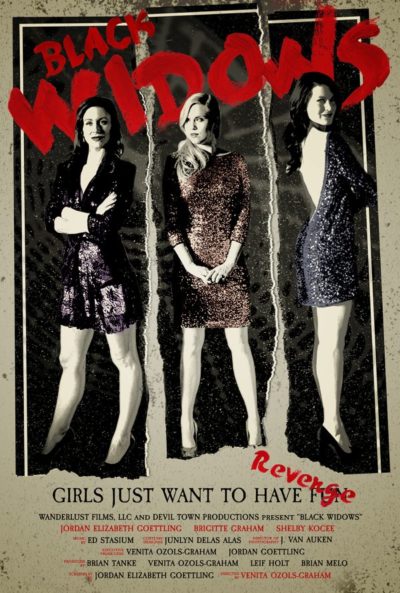 Three women friends – Darcy (Elizabeth), Nora (Graham) and Olivia (Kocee) – are all having shitty luck with their relationships. Olivia is in the middle of an ugly divorce from Adam. Nora’s boyfriend Ryan is a control freak. And while Darcy’s new friend Blair (Brown) initially seems fine, he turns out to be the worst of them all. After he refuses to take no for an answer, the trio decide revenge is a dish best served naked in the middle of the desert. Unfortunately for him, Blair ends up lacking a pulse. Unfortunately for the film, it takes forever to get to this point, and for the vast majority of its running-time the promised “dark comedy” is neither dark nor comedic.
Three women friends – Darcy (Elizabeth), Nora (Graham) and Olivia (Kocee) – are all having shitty luck with their relationships. Olivia is in the middle of an ugly divorce from Adam. Nora’s boyfriend Ryan is a control freak. And while Darcy’s new friend Blair (Brown) initially seems fine, he turns out to be the worst of them all. After he refuses to take no for an answer, the trio decide revenge is a dish best served naked in the middle of the desert. Unfortunately for him, Blair ends up lacking a pulse. Unfortunately for the film, it takes forever to get to this point, and for the vast majority of its running-time the promised “dark comedy” is neither dark nor comedic. Lance Charnes and I are Goodreads friends, having “met” (electronically) a few years ago through the Action Heroine Fans group. Some time ago, I bought a copy of his outstanding debut novel, Doha 12, and it got five stars from me. This new novel, the opener for a projected series, didn’t come to me as an official review copy –instead, Lance generously donated a print copy to the library where I work– but he knew I would read and review it, and knew my tastes well enough to be pretty sure I’d like it. Of course, we both understood that he might be wrong –but he wasn’t! For much of my reading experience, I expected to rate the book four stars –a denouement and conclusion that blew me to pieces and then knit me back together easily pushed it up to five stars.
Lance Charnes and I are Goodreads friends, having “met” (electronically) a few years ago through the Action Heroine Fans group. Some time ago, I bought a copy of his outstanding debut novel, Doha 12, and it got five stars from me. This new novel, the opener for a projected series, didn’t come to me as an official review copy –instead, Lance generously donated a print copy to the library where I work– but he knew I would read and review it, and knew my tastes well enough to be pretty sure I’d like it. Of course, we both understood that he might be wrong –but he wasn’t! For much of my reading experience, I expected to rate the book four stars –a denouement and conclusion that blew me to pieces and then knit me back together easily pushed it up to five stars.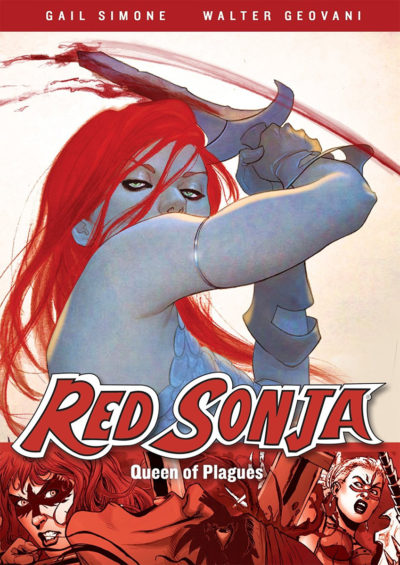 The rating here is largely based on my (I’d say, not unreasonable) expectation going in, that this would be actual animation. It isn’t. This appears to be, what I’ve since learned is called, a “motion comic”: think of it more as an illustrated radio play, with voice actors playing the parts in front of somewhat animated panels. And when I say, “somewhat”, I mean there is typically no more than one thing moving on them e.g. a character’s mouth. I can see comics for which this approach would work; unfortunately, a heavily action-oriented story such as Red Sonja is not among them.
The rating here is largely based on my (I’d say, not unreasonable) expectation going in, that this would be actual animation. It isn’t. This appears to be, what I’ve since learned is called, a “motion comic”: think of it more as an illustrated radio play, with voice actors playing the parts in front of somewhat animated panels. And when I say, “somewhat”, I mean there is typically no more than one thing moving on them e.g. a character’s mouth. I can see comics for which this approach would work; unfortunately, a heavily action-oriented story such as Red Sonja is not among them.